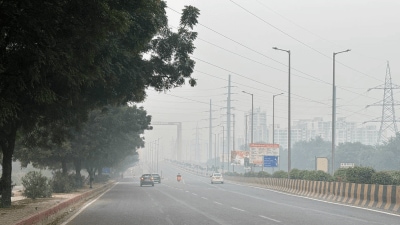As Kolkata and the rest of Bengal celebrate Kali Puja and Diwali, several correctional homes across the state have swapped routine rations for special festival menus, providing inmates a taste of home with dishes ranging from khichuri and aloo dum to fried rice with chicken kasha and katla curry.
Authorities say the gesture is meant to ease the loneliness of those behind bars during festival days. “These are correctional homes meant for reform. While festivities dominate outside we try to bring some happiness to the inmates behind the bars,” a senior officer at the Barrackpore Special Correctional Home said. He added that inmates often write appeals or prayers asking jail authorities for a change of menu during festivals, and the administration tries to oblige both convicts and undertrials where possible.

At Barrackpore, which houses about 400 inmates, officers laid out a festive spread. On Kali Puja day, breakfast included bread and jalebi, followed by khichuri (a Bengali savoury porridge), aloo dum, chutney and papad. Dinner was green-peas pulao, mixed paneer and rajbhog. For Diwali the following day, inmates started with muri ghugni at breakfast, had fried rice with chicken kasha and salad for lunch, and finished with rice, dal and katla fish curry for dinner.
Story continues below this ad
Hooghly district jail also adjusted its menu for the two festival days. On Monday and Tuesday — Kali Puja and Diwali — inmates were served khichuri, labra (spinach with assorted vegetables), aloo dum, chutney and papad; the jail plans to serve chicken kasha with rice, vegetables and dal on Wednesday at the inmates’ request. “Since it’s Monday and Tuesday, many inmates have vegetarian food. But on their request we have chicken kasha among other items on Wednesday,” a senior official from Hooghly district jail said.
Officials say these special menus are financed by small savings built up in the jail food budget a few months before festival season so that no extra cost is incurred. “Some jails organise small Kali pujas, others don’t. But all the correctional homes, from central to district units, try to bring some change in the menu,” the Hooghly officer added.
At the Presidency Central Correctional Home, which houses over 1,600 inmates, officials said the Diwali meal included mutton kosha, rice and vegetables. “We had vegetarian dishes like khichdi and vegetables yesterday during Kali Puja. Today, on Diwali, we are serving mutton kosha, rice and vegetables to the inmates,” a senior officer there said.
Prison diets during ordinary days normally follow a pattern of mostly vegetarian meals four days a week, with eggs, meat and fish provided on the remaining days. But festival menus expand this range, bringing in regional favourites and delicacies to lift spirits. During Durga Puja earlier this year, inmates were treated to items such as poha, luchi with cholar dal, chole bhature, basanti pulao, mutton biryani, and chicken kosha, among other dishes.
Story continues below this ad
Officials stress the dual purpose of such measures: to observe festivals and to support the reformative aim of correctional institutions. “While festivities dominate outside we try to bring some happiness to the inmates behind the bars,” the Barrackpore officer said, echoing the sentiment that small comforts can help maintain morale.
Family-like touches, special sweets at breakfast, fish or meat at dinner, or small pujas inside jails where permitted, are increasingly common across correctional homes during major festivals. Wardens say inmates welcome these gestures, which break the monotony of prison life and provide a momentary connection to cultural traditions.
Prison administrations also coordinate logistics carefully, ensuring food is prepared under supervision and distributed safely. Security and dietary restrictions are observed, and menus are planned to balance celebration with health and administrative feasibility.
As festival lights shine across the state, these curated menus reflect an effort by authorities to bring some of that warmth into institutions that often fall outside the public eye.









